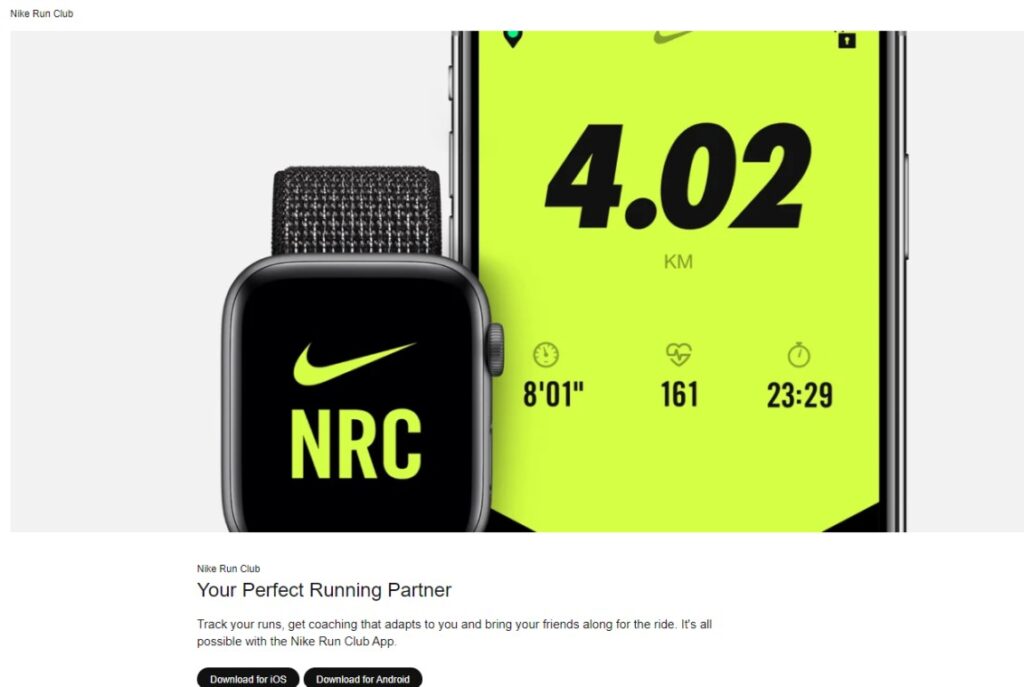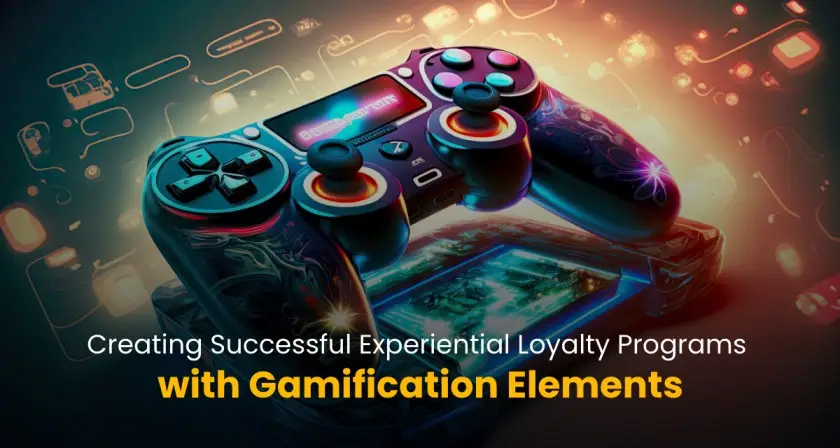A robust loyalty strategy is more than just a nice-to-have in today’s technological era; it’s a crucial component of customer engagement and business growth. At the forefront of this evolution are gamification and experiential rewards, two powerful trends that, when combined, create a dynamic and multifaceted approach to loyalty.
In this deep dive, we’ll explore how these strategies retain existing customers and attract new ones, setting the stage for sustained success. But before talking about experiential loyalty programs let’s take a look at the benefits of creating a multifaceted loyalty program.
Why Implement a Hybrid Rewards Strategy in Loyalty Programs?
1. Enhanced Customer Engagement
Gamification elements like points, badges, and leaderboards make interacting with your brand fun and engaging. This increased engagement can lead to higher customer retention rates and greater customer loyalty.
2. Increased Brand Differentiation
In today’s competitive market, having a unique and creative loyalty program can help set your brand apart from the competition. Incorporating gamified and experiential elements can make your loyalty program more appealing and memorable.
3. Deeper Emotional Connection
Experiential rewards can create memorable experiences that forge a deeper emotional connection between your customers and your brand. This emotional connection can enhance customer loyalty and advocacy.
4. Encourages Desired Behaviors
Gamification allows you to incentivize and reward the specific behaviors you want your customers to take, such as making repeat purchases, referring friends, or writing reviews.
5. Personalized Customer Experience
With a multifaceted loyalty strategy, you can offer personalized rewards based on customers’ interests and behaviors. This personalization can make your customers feel valued and appreciated, enhancing their loyalty.
6. Increased Sales and Revenue
By incentivizing customer engagement and repeat purchases, a well-designed loyalty program can ultimately increase sales and revenue for your brand.
Experiential Rewards: A New Era of Customer Loyalty

Experiential rewards are unique experiences offered as a reward to customers for their loyalty. Rather than traditional point systems that can be redeemed for products or discounts, experiential rewards elevate the customer journey by providing unique experiences that create emotional connections with the brand. These experiences could be a luxury getaway, a cooking class with a renowned chef, or a behind-the-scenes tour of a popular TV show. The possibilities are boundless!
Exploring the types of experiential rewards
Experiential rewards can significantly enhance customer loyalty programs. Here’s a list of various types:
1. Exclusive Events:
Offering invites to special events, giving customers a sense of belonging and appreciation. These can range from product launches to VIP gatherings.
2. Early Access to Products:
Allowing customers to access new products before they are available to the general public creates a feeling of exclusivity and privilege.
3. Personalized Services:
Tailoring services to individual customer preferences, such as personalized shopping experiences or custom product recommendations, enhances perceived value and personal connection.
The Gamification Transformation in Loyalty Programs
Gamification is the strategy of applying game design elements in non-game contexts, such as loyalty programs, to make them more fun, engaging, and interactive. It taps into the human innate love for competition and rewards, making customers revisit your brand, participate in the program, and engage more often.
This strategic approach transforms routine brand interactions into engaging experiences, increasing participation and sustaining brand interaction. Notably, a study by Snipp Interactive highlights the efficacy of gamification in loyalty programs, revealing a 47% surge in engagement, a 22% increase in brand loyalty, and a 15% uplift in brand awareness. These statistics underscore gamification’s pivotal role in augmenting customer loyalty frameworks and signify its indispensability in contemporary marketing strategies.
Exploring The Psychological Principles Behind Gamification
Gamification’s success hinges on core psychological principles that drive human behavior. The key elements include:
1. The desire for reward:
This is exemplified by loyalty points that can be redeemed for products or services, creating a reward cycle that encourages repeat purchases.
2. The thrill of a challenge:
Gamified challenges, such as achieving a certain number of purchases to unlock a special reward, tap into customers’ natural competitiveness and desire for achievement.
3. The quest for status:
Leaderboards or tiers in loyalty programs, like those seen in airline frequent flyer programs, create a sense of status and progression that customers aspire to achieve.
These principles encourage participation and create an emotional connection with the brand, transforming customers into loyal advocates.
Features That Facilitate Gamification In Loyalty Programs
Zinrelo’s platform stands out for its advanced capabilities in customer loyalty through gamification. It is engineered to boost gamification strategies with a suite of sophisticated features significantly:
1. Customizable reward tiers and points systems:
The platform enables the creation of multi-tiered loyalty programs. These systems are designed to motivate customers to increase their engagement by progressing through different levels of rewards and recognition, effectively encouraging more frequent and meaningful interactions with the brand.
2. Integration across digital channels:
It facilitates the seamless integration of loyalty programs with various digital channels, including social media. This feature ensures a wider and more effective engagement footprint, allowing customers to connect with the brand in diverse online environments.
3. Data-driven personalization:
By harnessing the power of advanced data analytics, the platform allows for highly personalized loyalty programs. It fine-tunes customer experiences based on individual behaviors and preferences, thus maximizing the impact and relevance of each customer interaction.
These features collectively enhance the core aspects of gamification, driving superior customer engagement and fostering long-term loyalty.
Merging Gamification and Experiential Rewards

When used together, gamification and experiential rewards create a powerful combination. Gamification engages and motivates customers to participate in the loyalty program, while experiential rewards ensure that this participation leads to meaningful, memorable experiences that strengthen their connection to the brand. This dual-benefit approach is revolutionizing loyalty strategies.
Merging gamification and experiential rewards in loyalty programs can help create an engaging, immersive, and rewarding experience for customers. Here’s how you can do it:
1. Identify Overlapping Interests
Understand where your customers’ interests in gamification overlap with potential experiential rewards. For example, a travel company might gamify the booking experience and offer exclusive travel experiences as rewards.
2. Create Tiered Rewards
A tiered system can enhance both gamification and experiential rewards. Customers can progress through different tiers by earning points, with each tier offering more exclusive and exciting rewards.
3. Incorporate Real-Time Feedback
Use real-time feedback to enhance and align the gamified experience with the rewards offered. This will help you to monitor program performance and gather data directly from the customers. This data can then be used to upgrade program mechanics to enhance customer experience.
4. Incorporate Game Elements
Gamification involves incorporating game elements into non-game contexts. In a loyalty program, this could involve introducing points, badges, leaderboards, or levels that customers can earn or progress through by engaging with your brand.
5. Use Experiential Rewards
Consider offering experiential rewards rather than just offering discounts or tangible rewards. These could include exclusive experiences, access to special events, or unique opportunities to engage with your brand.
6. Create Challenges and Competitions
Engage customers by creating challenges or competitions. This could involve setting goals for customers to earn rewards or hosting competitions where customers can win prizes.
7. Personalize the Experience
Use data to personalize each customer’s gamification and reward experience. This could involve tailoring challenges or rewards based on a customer’s purchase history or preferences.
8. Make it Social
Incorporate the power of social media into your loyalty program. This could involve allowing customers to share their achievements on social media or creating a community where they can interact and compete. Furthermore, highlighting a customer’s achievements on social media makes them feel valued, allowing brands to forge deeper customer relationships.
9. Balance Effort and Reward
A core concept in gamification is that the effort to achieve a goal must be balanced with the reward. Reaching a goal should be challenging but not too difficult, and the reward should be worthwhile.
How to Overcome the Challenges in Implementing Experiential Loyalty Programs
Implementing gamified and experiential strategies in a loyalty program can offer numerous benefits, but it also comes with challenges. Overcoming the challenges associated with implementing gamified and experiential strategies in loyalty programs requires careful planning, creativity, and a customer-centric approach.
Here are some of the potential obstacles businesses may face and ways they can address these issues:
1. Balancing Fun and Functionality:
One of the biggest challenges is balancing making the gamified elements fun and ensuring they still serve their primary purpose – to increase customer engagement and loyalty. Overcomplicating the system with too many game elements can confuse customers and deter them from participating. In addition, having too few gamified elements can also make customers bored.
Furthermore, brands should find the right experiential reward for customers participating in challenges. Offering only one type of benefit can lead to a one-sided experience. A healthy balance of experiential rewards and gamified elements is needed to cater to different customer preferences and keep the program exciting.
Solution: Simplify the Program
Gamification and experiences can lead to complexity in the loyalty program. While gamification should be engaging and fun, keeping the program simple and easy to understand is also important. Too many rules or complicated mechanics can deter customers from participating. Clear communication about what experiences can be earned through which challenge makes it easier for customers to engage with the program.
2. Creating Meaningful Experiences:
Designing truly rewarding experiences that resonate with your customers can be difficult. It requires a deep understanding of your customer base, including their preferences, behaviors, and what they value most. Generic or uninteresting rewards could fail to motivate customers to engage with the program.
Most gamified loyalty programs face this challenge as the same reward is offered to every member.
Solution: Understand Your Customers
It is easy to personalize tangible customer rewards. But when it comes to experiences and gamification, personalization becomes a significant hurdle. To create meaningful experiences, brands must understand their customers. This involves analyzing customer data to gain insights into their preferences and behaviors. Customer feedback can also be invaluable in refining the program. This will also help brands tailor games and challenges based on things the customer likes.
3. Maintaining Engagement Over Time:
Keeping customers continuously engaged with the program over a long period is another challenge. The novelty of gamified elements can wear off over time, especially if the program is too difficult or takes too long to earn rewards. So, updating and refreshing the program regularly to keep it interesting is crucial.
Solution: Regularly Refresh the Program
Humans change regularly, and so do their behavior and demands. To maintain long-term engagement, brands should regularly update and refresh their loyalty programs. This could involve introducing new challenges, rewards, or game elements that meet the changing demands and trends of the market.
4. Technological Challenges:
Implementing a loyalty program that has both gamification elements and experiential rewards requires significant technological infrastructure. Businesses need a robust loyalty platform that can handle the complexities of the program, track customer progress, and distribute rewards. This can be a major challenge, particularly for small businesses with limited resources.
Solution: Invest in Technology
A robust technological platform is crucial for managing a gamified and experiential loyalty program. Brands might need to invest in new technology or partner with a provider specializing in gamified loyalty programs. In addition, advanced technology, such as AR/VR, can make offering experiential rewards easier.
5. Measuring Success:
Determining the success of a customized loyalty program can be tricky. Businesses must establish clear metrics to measure the program’s impact on customer engagement, retention, and overall revenue.
Solution: Set Clear Metrics
Brands should establish clear metrics to measure the success of their loyalty program. This could involve tracking customer engagement, retention rates, or revenue generated from the program.
Case Studies:
1. Nike Run Club

Nike’s Run Club app uses gamification to motivate users to run more. Users can earn badges and trophies for reaching certain milestones, such as running a certain distance or completing a certain number of runs. This makes exercise feel more like a game and provides additional motivation to get out and run.
Run Club members get access to special Nike events where they can meet and train with other members of the Nike community. Members can also talk to Nike experts to help them make purchase decisions and discuss training best practices.
2. WeightWatchers
The WeightWatcher loyalty program encourages members to live healthier lifestyles by offering badges for achieving goals such as losing weight, exercising regularly, and eating healthily. These digital rewards serve as a form of gamification, encouraging members to stay engaged and continue working towards their health goals.
Members can earn “Wins” for tracking meals, activity, and weight and for attending WW Wellness Workshops. These Wins can later be redeemed for exclusive products, services, and experiences that motivate customers on their wellness journeys.
Empowering Experiential Reward Programs with Technology
1. Data Collection and Analysis:
Technology enables businesses to collect and analyze customer data, which is invaluable for tailoring and optimizing loyalty programs. Once a brand understands the customer’s wants, it can design the experiences and games accordingly. For example, let’s say a loyalty program member is a fan of animated movies. The brand could design a customized challenge based on any trending anime and then offer movie tickets as a reward for winning.
2. Automation:
Automation tools can help manage various aspects of a loyalty program, from tracking customer behavior to delivering rewards. Customers can earn rewards automatically on reaching certain milestones. For example, a fitness brand can track customers’ movements and automatically reward them for completing a certain number of steps.
3. Artificial Intelligence (AI):
AI can analyze customer behavior and predict future actions, allowing for more personalized and relevant rewards. Leveraging AI’s capabilities in data analysis, personalization, and predictive modeling, brands can offer a highly engaging and tailored loyalty experience that evolves with their customers’ dynamic needs and preferences.
4. Mobile Applications:
A dedicated app can significantly enhance the user experience of a loyalty program. It allows for easy access to rewards, real-time tracking of points, and immediate notifications of special offers or challenges. Additionally, gamification elements can be seamlessly integrated into the app, making participation even more engaging.
5. Customer Relationship Management (CRM) Systems:
Brands can assess the performance of the gamified and experiential loyalty program through CRM-generated reports. This includes insights into customer participation, preferences, and the program’s overall impact on customer relationships. CRM systems can also automate the allocation of rewards, ensuring a seamless and timely experience for customers as they progress through the gamified elements.
Conclusion
The exploration of gamification and experiential rewards in loyalty programs highlights a clear path to heightened customer engagement and loyalty. These strategies, when merged, offer a robust solution to modern loyalty challenges: the enjoyment of meaningful experiences. Zinrelo’s platform exemplifies this fusion, providing tools instrumental in implementing these innovative approaches. As businesses navigate the evolving landscape of customer preferences, adapting to such multifaceted strategies is advantageous and essential for sustained success.
The future of loyalty programs lies in embracing gamification and experiential rewards tailored to meet the evolving demands of today’s consumers. Businesses should consider these insights and strategies to revamp their loyalty programs, ensuring they remain engaging, relevant, and effective in a competitive marketplace.
Key Takeaways and Action Items
- Gamification Boosts Engagement and Loyalty: Incorporating gamification elements like points, challenges, and leaderboards into loyalty programs can significantly increase customer engagement, leading to higher retention rates and brand loyalty.
- Experiential Rewards Create Emotional Connections: Offering unique experiences as rewards fosters deeper emotional connections between customers and the brand. Exclusive events, early product access, and personalized services contribute to a memorable customer journey.
- Multifaceted Loyalty Strategies Deliver Superior Results: Combining gamification and experiential rewards creates a powerful and immersive loyalty experience. This dual-benefit approach enhances customer engagement, differentiation, emotional connections, and desired behaviors.
- Technology is Essential for Implementation: Leveraging technology, such as advanced analytics, automation, AI, mobile applications, and CRM systems, is crucial for successfully deploying and managing gamification and experiential rewards in loyalty programs.
- Regularly refreshing and understanding customers are key: To overcome challenges, loyalty programs should be kept simple, regularly refreshed, and tailored to customer preferences. Understanding customer data and regularly updating the program is essential for long-term success.
Ready to Build Your Loyalty Program With Zinrelo?
Learn how our holistic loyalty platform can transform your business.


